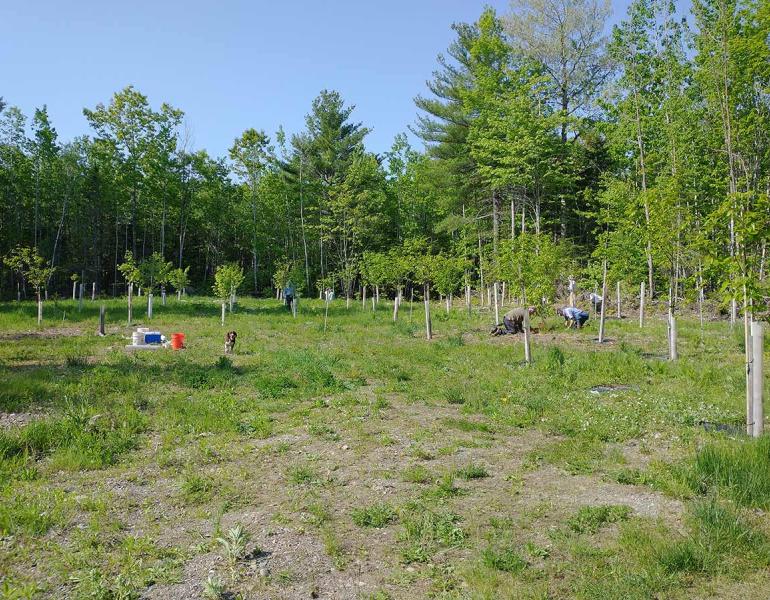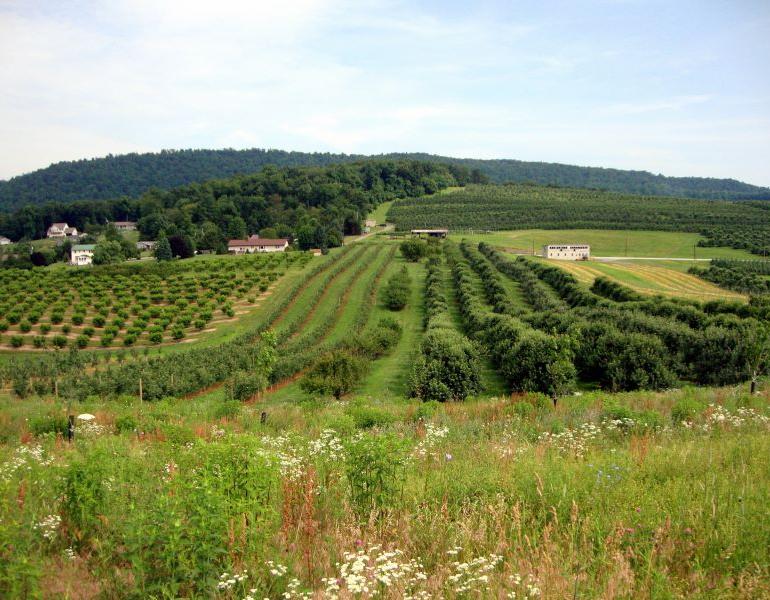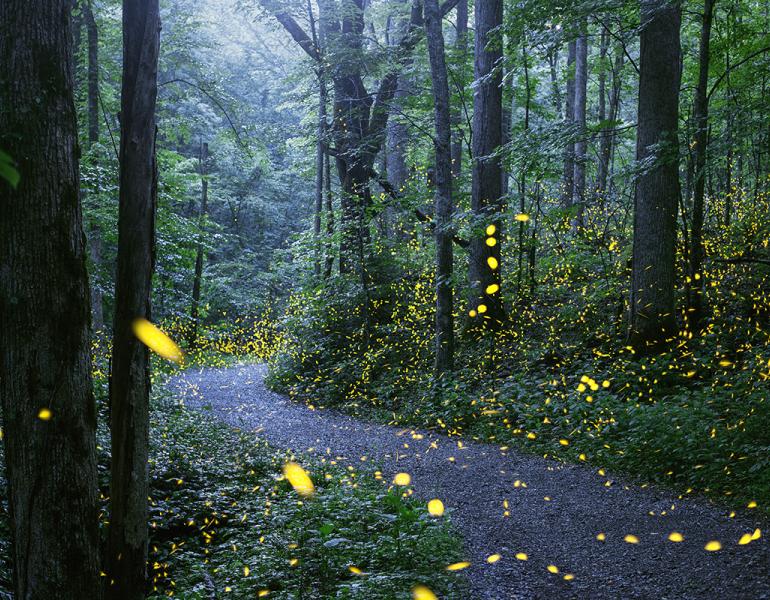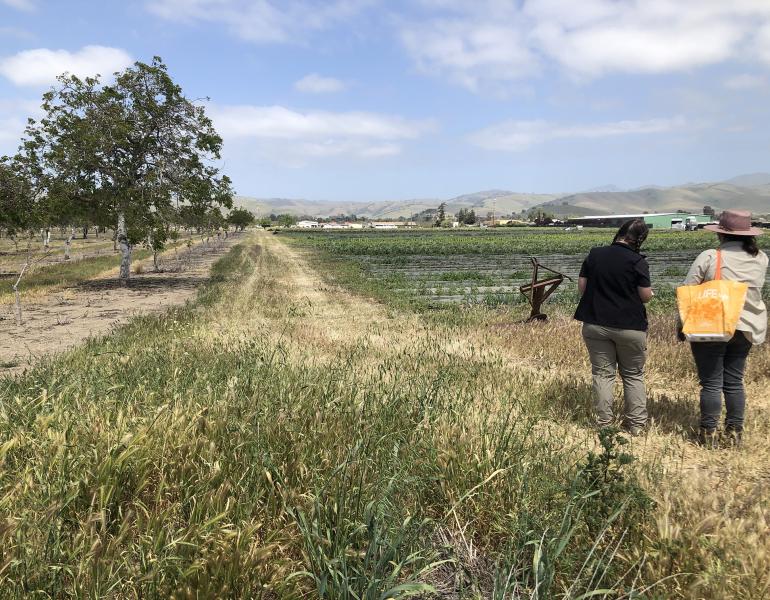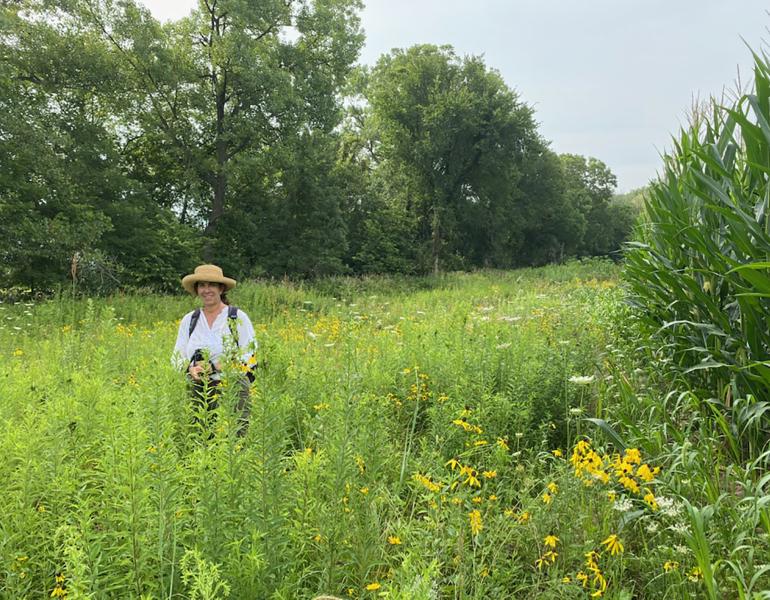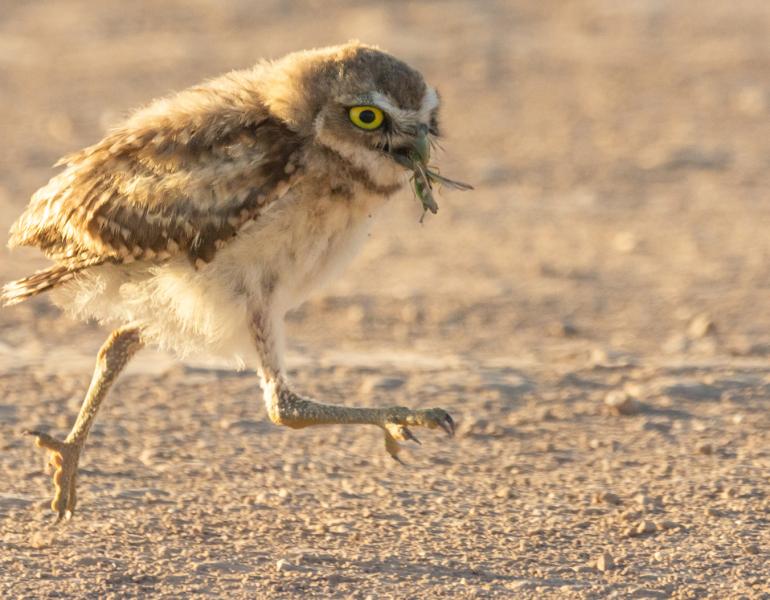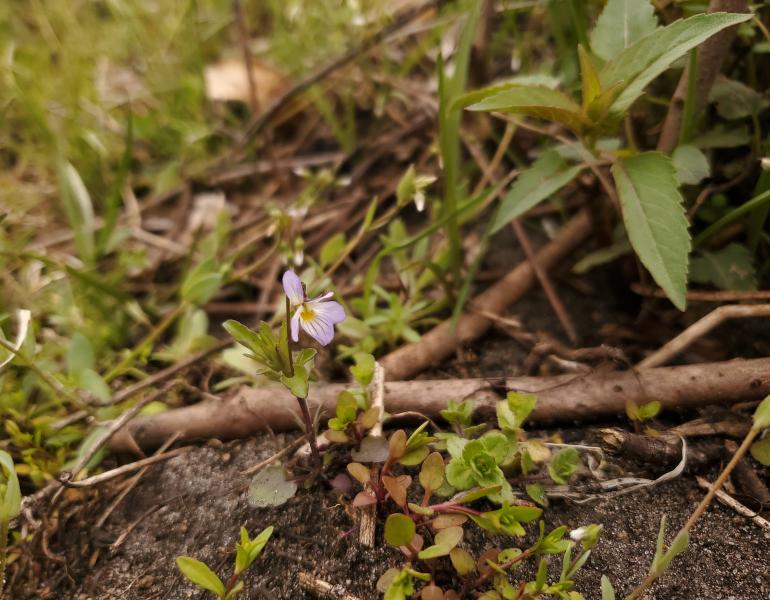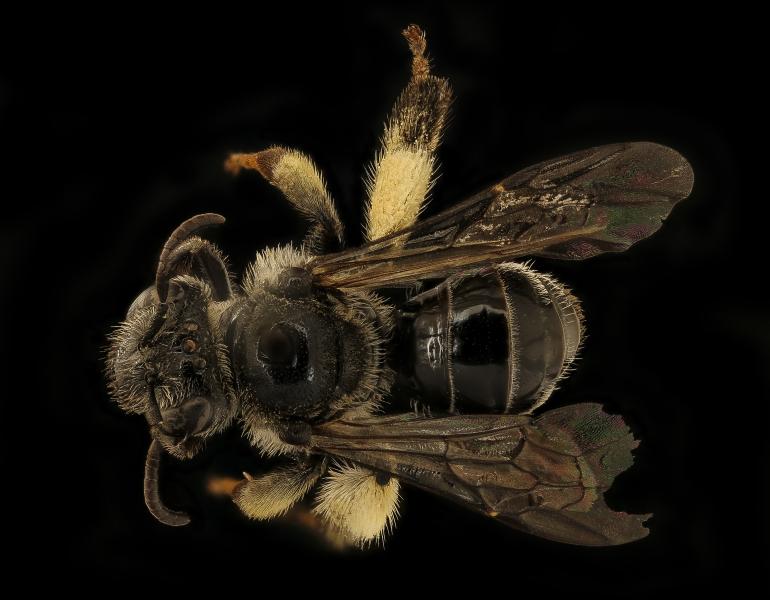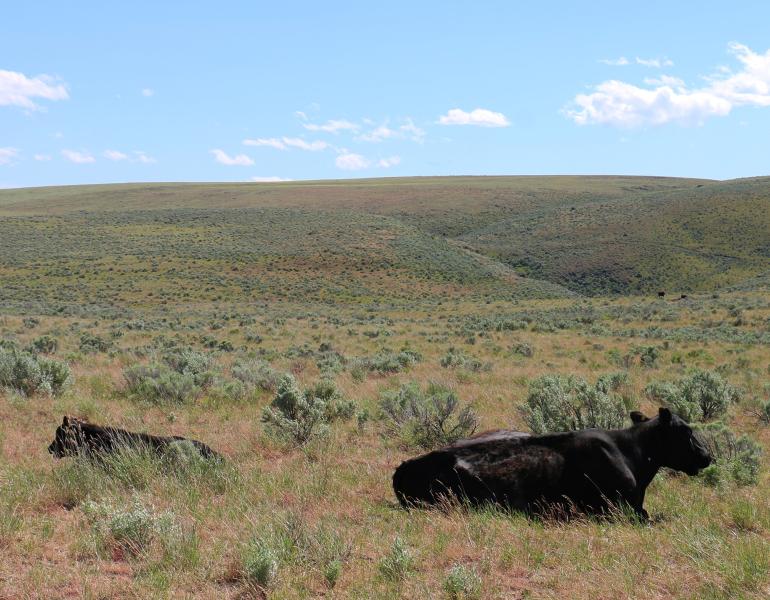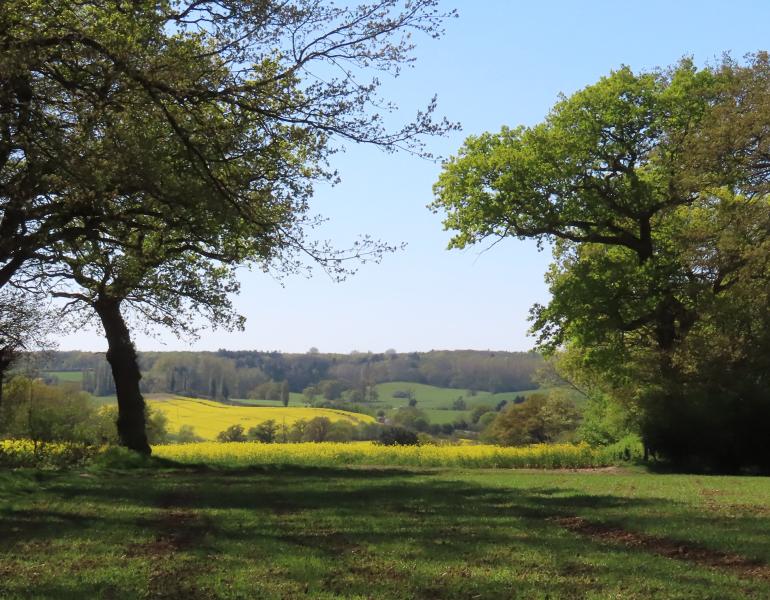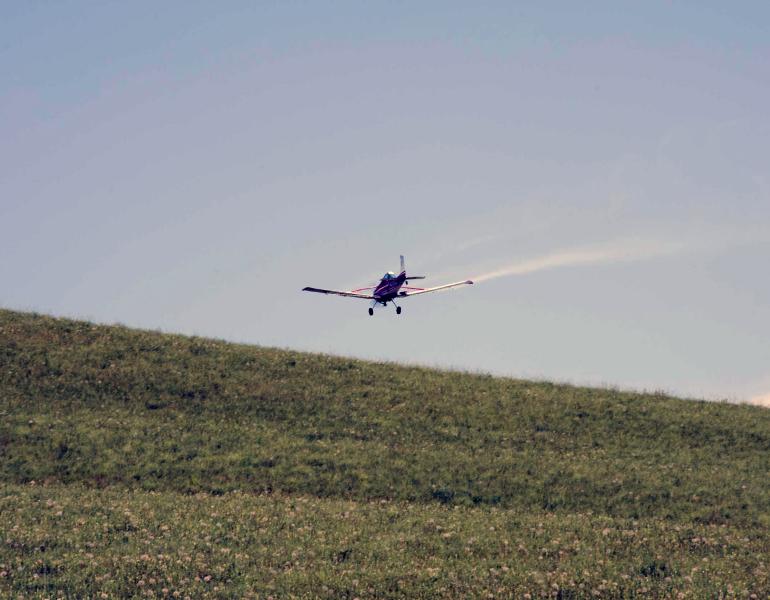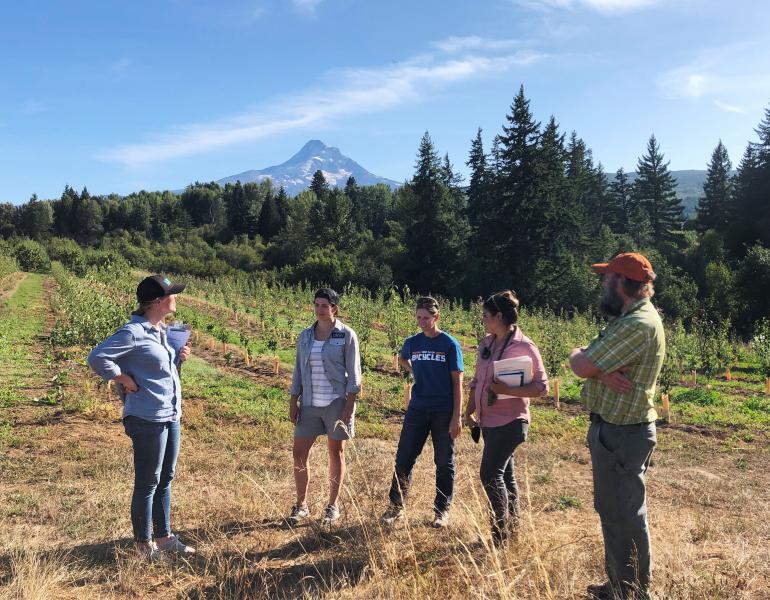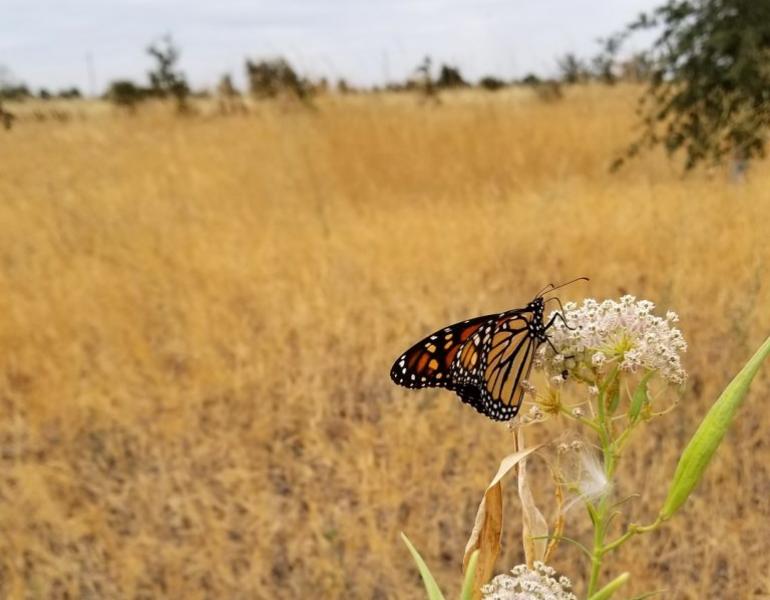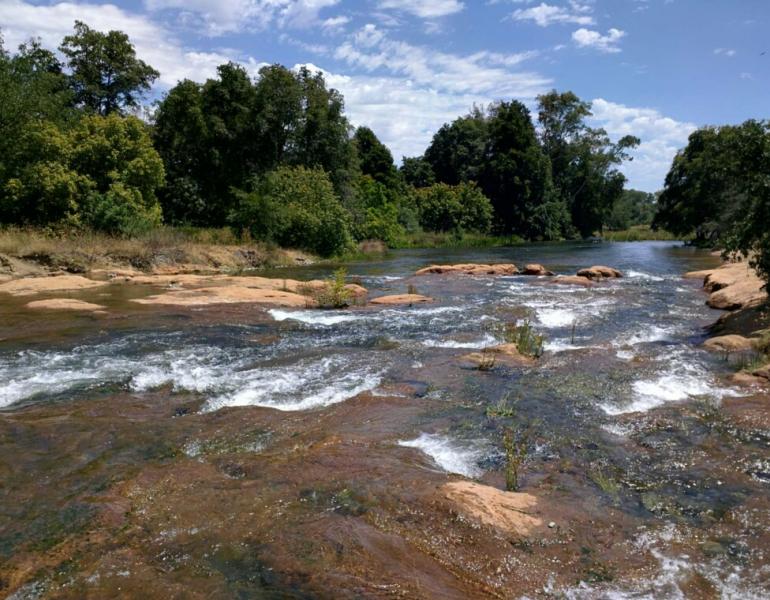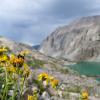Without our federal public lands, many invertebrates—and the plants and other animals that depend on them—would be in trouble. You can help speak up for these incredible places.
Land Management
Living Snow Fence Helps Both Crops and Pollinators in the Semi-Arid West
Not only do hedgerows help block damaging winds, but they can create pollinator habitat, increase carbon capture, and bolster crop production!
Working With Land Trusts To Create and Conserve Habitat Across New England
Erin Cocca shares her experience helping Maine’s Orono Land Trust with their conservation efforts.
Intrinsically Linked: Why Climate-Smart Agriculture Must Not Neglect Biodiversity
Agriculture is the single largest land use on the planet, with more than 40% of the Earth’s surface devoted to crops or grazing. In order to fully address climate change and sustain agriculture in an unstable climate, we must also address the biodiversity crisis. By making biodiversity conservation a part of regenerative farming and including it in funding options like the USDA Partnerships for Climate-Smart Commodities program, the agricultural sector can tackle both the climate crisis and the biodiversity crisis simultaneously.
Sparking a Sustainable Firefly Tourism Movement
Firefly tourism is on the rise in the United States. While it can benefit local economies and help more people to experience the wonder of nature, it also presents challenges. Xerces and partners have created a set of guidelines for site managers and an etiquette guide for visitors to help everyone enjoy fireflies in a way that protects them and their habitats.
Selecting seeds for bison, pollinators to share the land
While designing a unique seed mix for restoration takes time, it can be well worth the extra effort. The right mix of plants can boost the long-term ecology and function of a landscape and can be particularly important for working lands – those with multiple uses like agroforestry, grazing and silvopasture. In this article, Farm Bill Pollinator Conservation Planner Karin Jokela describes making the perfect mix to balance the needs of bison and pollinators.
Burning the Land
Fire has been used to manage prairies for centuries, and remains an important tool for grassland managers to reduce woody plant encroachment and increase flower production of key nectar and pollen sources. However, burning entire landscapes is problematic for pollinators, and fire must be used carefully.
The Value of Conservation Planning
Land owners and managers across the state of California have taken up the call to get more habitat in the ground for monarchs. But there’s one important process that comes into play prior to on-the-ground restoration: before we can plant, we plan.
Coming Home: A Woman Landowner’s Conservation Calling
The next generation is something Ruth Rabinowitz spends a lot of time thinking about. As an Iowa farmer with a deep commitment to conservation, she feels it’s important for her to remember to look beyond her own lifetime.
Protecting Grassland Ecosystems from Insecticides
Grasshoppers play a central role in rangeland ecosystems and food webs. Herbivory by grasshoppers speeds up the recycling of nutrients from plants, and they are a vital part of the diet of dozens of other rangeland animals. Aerial spraying campaigns to control grasshoppers have wide impacts on rangeland ecology. Xerces staff are working to reduce spraying and protect rangeland wildlife.
The Return of Wild Pansies at Polk City Cemetery
In Iowa, volunteers are working hard to restore an area of old prairie. They are seeing signs that the grassland is recovering, including the regrowth of pale coneflowers and wild pansies.
Pollinators Find a Home on Roadsides
State Departments of Transportation manage millions of acres of land and have an opportunity to make a significant difference for pollinators. Roadsides provide pollinator habitat, as well as connectivity across otherwise inhospitable landscapes -- and may be home to native plant communities that can no longer be found in surrounding lands.
Great Plains Rangelands Are Important Habitat for Pollinators
Rangelands of the Great Plains are a highly diverse—and endangered—ecosystem filled with subtle beauty that is often underappreciated. These landscapes evolved with natural disturbances, such as grazing and wildfire. Maintaining disturbance through active management is essential for healthy rangelands and pollinators.
Wetlands as Pollinator Habitat
A bee that collects floral oils rather than nectar? Yes! The nude yellow loosestrife bee relies on a single species of wetland plant, fringed loosestrife, to supply its nest, demonstrating the importance of protecting, restoring, and managing wetland habitats.
Planned Grasshopper Sprays Threaten Monarchs, Bees, Beneficial Insects, and Birds Across Western Rangelands
Rangelands of the western United States are home to many amazing species of wildlife from sage-grouse to butterflies, and frequently used for cattle grazing. A significant proportion of rangelands are publicly owned, so how they are managed, especially when it comes to grasshopper control, is a topic of great concern.
England’s Ancient Woodlands: Living Time Capsules
To many people, the roar of a chainsaw is a sound of alarm, not conservation. But for England’s surviving ancient woodlands, the chainsaw has become a valuable tool.
Planning and Planting for the Future of Monarchs in California
Pismo State Beach is one of the most important overwintering sites for monarchs in California. It has regularly hosted over 10% of the entire western monarch population each winter. Xerces Society has partnered with California State Parks, Creekside Center for Earth Observation, and others to develop and implement a plan to restore and enhance the site’s ability to host monarchs.
Home on the Range: Grasshoppers and Insecticides on Western Rangelands
Usually considered competitors with livestock for forage, grasshoppers can actually be beneficial to rangelands by affecting plant composition, and even influence the soil microbial communities. They also play a critical role in the grassland food web. Despite the inability to tie grasshopper densities to the potential for damage, planes and ground crews are deployed every summer to spray against grasshoppers.
New Report: How Dicamba Herbicides are Harming Cultivated and Wild Landscapes
Since 2016, more than five million acres of crops—an area roughly the size of New Jersey—have been injured by dicamba drifting off site. Concerned landowners and volunteer monitoring efforts also have raised the alarm about extensive drift damage to wild plant communities across the Midwest and mid-South.
Discovery of a Rare Plant Through Remnant Prairie Restoration
Less than one-tenth of a percent of Iowa's native tallgrass prairie remains. The scraps that survive are valuable refuges for less-common plants and deserve thoughtful management.
Pollinator Conservation Program Digest - January 2020
January's featured staff members have been working with growers in one of Oregon's major fruit-producing regions, and training conservation professionals to assess and improve habitat in Wisconsin.
Climate News Roundup: IPCC Lands Report
When most people think about climate change, they likely think of CO2 emissions from cars or factories. But the way land is used and managed has a significant impact on the climate.
Managing for Monarchs in the West
A new guide to protecting the monarch butterfly from the Pacific to the Rockies presents a holistic approach to monarch conservation.
Scientists Urge Action to Protect Waters from Neonicotinoid Insecticides
Will California’s regulators take steps to curtail neonicotinoid water pollution? If they take the advice of scientists, they will.
New Fact Sheet Highlights Risks to California’s Surface Water from Insecticides
Neonicotinoids have been found in California’s rivers and streams at levels known to harm or outright kill aquatic invertebrates.




